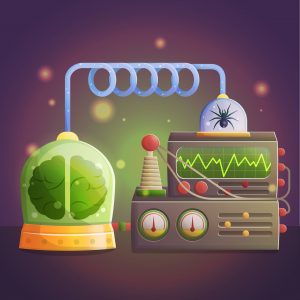Pennsylvania policyholders need to keep their eyes on the details when it comes to defending faulty workmanship claims. What you see—or think you see—is not always what you get. In Bealer v Nationwide Mutual Insurance Company, the U.S. District Court for the Eastern District of Pennsylvania held on November 16, 2016 that an insurance company did not have a duty to defend its policyholder after determining that the claims asserted in the underlying litigation were for faulty workmanship and did not constitute an “occurrence.” But other Pennsylvania decisions provide opportunities to find coverage for policyholders who might be in similar situations.
in the underlying litigation were for faulty workmanship and did not constitute an “occurrence.” But other Pennsylvania decisions provide opportunities to find coverage for policyholders who might be in similar situations.
William Tierney entered into a contract with Robert Bealer for the purchase of a lot and construction of a residence. About six months after Tierney moved in, a rainstorm flooded the basement of his home—after which he noticed cracks on several foundation walls, and then brought suit against Bealer.





 control over claims exposure and costs while at the same time satisfying regulatory requirements by having an insurance company as the ultimate guarantor of claims payments. But while some businesses may save money with LD policies, they may also find their assets tied up for years unless they challenge some common—and often problematic—terms and conditions of their LD policy programs.
control over claims exposure and costs while at the same time satisfying regulatory requirements by having an insurance company as the ultimate guarantor of claims payments. But while some businesses may save money with LD policies, they may also find their assets tied up for years unless they challenge some common—and often problematic—terms and conditions of their LD policy programs.

 exploit. Unfortunately for some policyholders, this time-honored tactic of targeting the human element involved with a technology may actually fall right into a gap in companies’ insurance coverage, as highlighted in the Fifth Circuit’s decision this month in
exploit. Unfortunately for some policyholders, this time-honored tactic of targeting the human element involved with a technology may actually fall right into a gap in companies’ insurance coverage, as highlighted in the Fifth Circuit’s decision this month in  Insurance is not only a risk transfer tool, but also a valuable asset. Certain coverages, however, are not purchased or pursued by multinational companies transacting business in the United States because there are nuanced differences between international and U.S. insurance programs and law. These companies, often with global offices, will be best served by having counsel experienced in such nuances conduct a diagnostic review of their insurance policies. Not only may potential coverage gaps be identified, but a company will be better able to plan ahead and negotiate more favorable coverage terms before a loss arises.
Insurance is not only a risk transfer tool, but also a valuable asset. Certain coverages, however, are not purchased or pursued by multinational companies transacting business in the United States because there are nuanced differences between international and U.S. insurance programs and law. These companies, often with global offices, will be best served by having counsel experienced in such nuances conduct a diagnostic review of their insurance policies. Not only may potential coverage gaps be identified, but a company will be better able to plan ahead and negotiate more favorable coverage terms before a loss arises.
 If you believe the news, I may be lucky to make it out of the driveway alive on my morning commute tomorrow. That microwave-ready triple egg breakfast sausage sandwich I stuff into an increasingly jowly face on my way to the car? Recalled. The overpriced technology-assisted car that practically backs itself out of the driveway as I struggle to wipe away the remnants of my savory breakfast? Recalled. Each morning brings fresh product recall announcements involving everything from contaminated sunflower seeds to exploding toilets. This year contamination recalls in Food and Drug Administration (FDA) regulated industries alone
If you believe the news, I may be lucky to make it out of the driveway alive on my morning commute tomorrow. That microwave-ready triple egg breakfast sausage sandwich I stuff into an increasingly jowly face on my way to the car? Recalled. The overpriced technology-assisted car that practically backs itself out of the driveway as I struggle to wipe away the remnants of my savory breakfast? Recalled. Each morning brings fresh product recall announcements involving everything from contaminated sunflower seeds to exploding toilets. This year contamination recalls in Food and Drug Administration (FDA) regulated industries alone